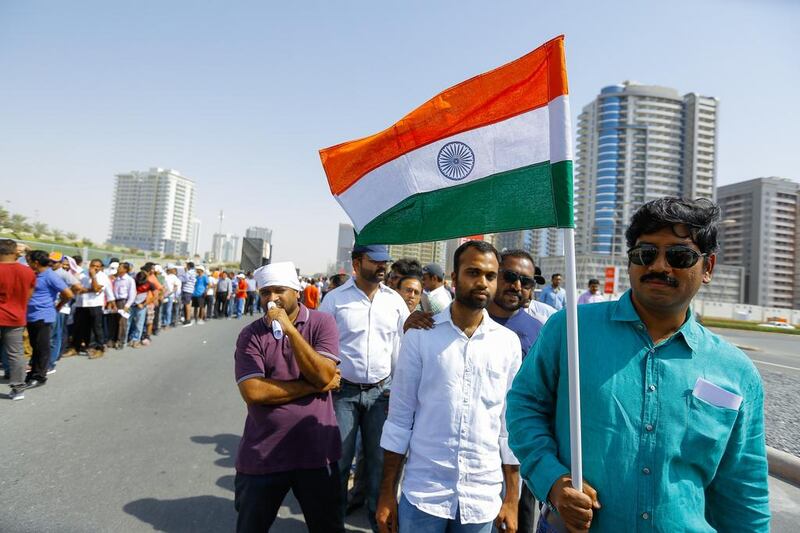The large scale of the movement of foreign citizens to the UAE has been revealed in a United Nations report, which shows the population shift from India to the Emirates is the second largest globally between any two countries.
The United Nations' 2017 International Migration Report said there are now 3.3 million Indian-born people in the UAE, which is almost four times the figure of 2000, when the Emirates had 0.9 million Indian-born residents.
Only the number of Mexican-born individuals living in the United States – at 12.7 million – is greater when it comes to people born in one nation, but living in another.
The UAE also has the second largest number worldwide of migrants as a proportion of the total population. UN figures indicate that 88.4 per cent of UAE residents in 2017 were born outside the country, up from 77.6 per cent in 2000.
Only the 100 per cent figure of the Vatican, where births do not take place, is higher than the UAE’s.
The UAE has long been near the top of the tables for international migrant populations, with more than nine in 10 private-sector workers born outside the Emirates.
Other Gulf countries also stand out for their large proportion of foreign-born residents, with the figure in Kuwait being 75.5 per cent, Qatar 65.2 per cent, Bahrain 48.4 per cent, Oman 44.7 per cent and Saudi Arabia 37.0 per cent.
The UAE’s foreign-born population now stands at 8.313 million, up from 2.447 million in 2000. Of these people, 25.3 per cent are female, while their median (middle) age is 33.8 years.
The UAE introduced a formal programme for guest workers in 1971 and analysts have said that, since then, the country’s political stability, rapid economic growth with consequent opportunities, modern facilities and geographical location have fuelled movement to the country.
This has brought with it the need to ensure UAE nationals are not excluded from the private sector, with multiple Emiritisation initiatives having been introduced.
Dr David Roberts, a Gulf region political analyst at King’s College London, said he thought the flow of population from the Indian subcontinent into GCC countries would continue.
“I don’t see why it will slow down. There’s been a cycle going on for decades and decades. The populations of the smaller Gulf states are growing, but they [still] have small populations and large economies. They’re always going to need large numbers of foreigners,” he said.
The Indian subcontinent, he said, offered a wide range of labour of the kind in demand in Gulf states, ranging from blue-collar to white-collar workers. Friendly political ties are also a factor.
“With India you don’t have any obvious geopolitical issue. You have history going back a long time, an amicable history,” he added.
______________
Read more:
[ Migrant flow continues to cross the Mediterranean ]
______________
There are several other migration flows on a similar scale to that between India and the UAE.
As a result of the ongoing turmoil in Syria, there are now 3.3 million Syrian-born residents in Turkey, while there are 3.3 million Russian-born people in Ukraine, the same as the number of Ukrainian-born individuals in Russia.
Published by the UN’s Department of Economic and Social Affairs, the new report reveals that globally there are 258 million people living outside their country of birth, up nearly half since 2000, and they make up 3.4 per cent of the world’s population.
A key trend since 2000 has been the growth in the movement of people to high-income nations. Migrants now constitute 14 per cent of the population of wealthy countries, compared to 9.6 per cent in 2000.
The UN has highlighted the potential benefits that migration can bring, including a decrease in the dependency ratio, which is the proportion of the population that is too young or too elderly to work. Globally, 74 per cent of migrants are of working age (defined as aged 20 to 64), while only 57 per cent of the world’s total population is of working age.
Of the world’s international migrants, 26 million, or about one in ten, is a refugee.







